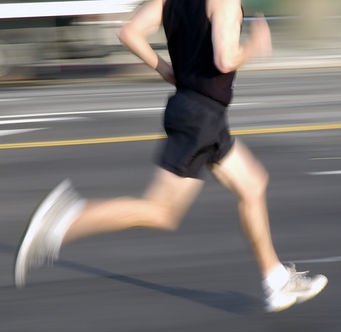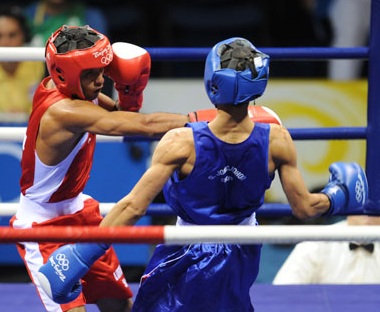Unsweeten Your Tooth: 5 Tips for Cutting Back on Refined Sugar
 In my last blog post, I touched on some of the benefits of moving outside comfort zones with regard to a goal I had to slim up in a short period of time for a movie role. One of the ways I managed to lose 5 lbs in one week was cutting back on refined sugar. I pretty much eliminated it from my diet except for one “cheat” meal.
In my last blog post, I touched on some of the benefits of moving outside comfort zones with regard to a goal I had to slim up in a short period of time for a movie role. One of the ways I managed to lose 5 lbs in one week was cutting back on refined sugar. I pretty much eliminated it from my diet except for one “cheat” meal.
The Bitter Truth about Sugar
Refined sugar, not just white sugar, but also sucrose, fructose, corn syrups, etc, is probably the single biggest factor contributing to obesity in North America and other western countries with similar diets. According to Dr. Lustig from “The Skinny on Obesity,” the amount of sugars (particularly fructose, but not limited to) in processed foods and drinks has increased steadily over the years as a way of keeping food prices cheaper. And with the steady increase of sugar over the decades came the increase in obesity, heart disease, diabetes and other health problems. Fructose is particularly bad because it metabolizes in a way that puts more fat on the body that eating straight fat, according to Lustig, though others in the scientific community are saying this focus on fructose is alarmist and somewhat inaccurate. This post isn’t intended to cover this argument in detail, but if you want the full public lecture explaining it and the studies supporting it, check out the video below. Either way, one easy way to make significant changes in your health is to cut back on all refined sugar (especially ones in drinkable form). (more…)
The Benefits of Moving Outside Your Comfort Zones
 Recently, I had a big opportunity come my way in the film industry for my fencing skills. There was one caveat that led to me pushing my boundaries; they wanted me to lean up a bit for the role I would potentially be playing within a couple of weeks. First off, I’ve always maintained a healthy weight for my size and I’m fit/strong and all that, but I realized that there was room for me to trim off a little extra padding around my mid-section.
Recently, I had a big opportunity come my way in the film industry for my fencing skills. There was one caveat that led to me pushing my boundaries; they wanted me to lean up a bit for the role I would potentially be playing within a couple of weeks. First off, I’ve always maintained a healthy weight for my size and I’m fit/strong and all that, but I realized that there was room for me to trim off a little extra padding around my mid-section.
I decided to strictly manage my diet and exercise to lean up as much as is realistic within the short period of time I had, using a weight loss plan I found online. Even if I didn’t get the part or whatever, I figured it would be a great challenge for me. And it was. I managed to lose 5 lbs in one week, which doesn’t sound like a lot, but this translated to losing 2 inches off my waist, 1 inch around my hips, and 1 inch around my chest. This was great progress for me in such a short period of time. (more…)
Running Safety Tips for Everyone
 I’m on a bit of a roll talking about running these last couple of blog posts, having written about the benefits of running for martial artists and about running workouts for martial artists. Today, I’d like to discuss tips for staying safe while running. While women are more frequently the target of serious assaults while running, as was recently the case for Sarah B Hart of Russell County, USA who was attacked during her morning jog, running safety is relevant for everyone, so I’d like to share a few tips here to help keep people safe on the roads and trails. (more…)
I’m on a bit of a roll talking about running these last couple of blog posts, having written about the benefits of running for martial artists and about running workouts for martial artists. Today, I’d like to discuss tips for staying safe while running. While women are more frequently the target of serious assaults while running, as was recently the case for Sarah B Hart of Russell County, USA who was attacked during her morning jog, running safety is relevant for everyone, so I’d like to share a few tips here to help keep people safe on the roads and trails. (more…)
Running Workouts for Martial Arts Practitioners
 Last week, I wrote a blog post about the benefits of running for martial artists. This week, I wanted to go a little more into detail about what types of running might best serve the needs of a martial arts practitioner. Interval running is probably the best option for people who do martial arts, blending the aerobic cardio training of lighter running/jogging and the anaerobic cardio training of fast running/sprinting. Aerobic cardio gives you the kind of cardio you need to keep going over longer periods, such as belt tests. It’s also the type of cardio that burns fat. Anaerobic cardio, on the other hand, helps you use higher levels of energy in shorter bursts, like you would use when sparring or grappling, especially when doing so competitively when nervous tension tends to cause you to burn even more energy. To do interval running, you alternate between lower intensity running/jogging and sprints. The length of the intervals depends on what you’re training for. (more…)
Last week, I wrote a blog post about the benefits of running for martial artists. This week, I wanted to go a little more into detail about what types of running might best serve the needs of a martial arts practitioner. Interval running is probably the best option for people who do martial arts, blending the aerobic cardio training of lighter running/jogging and the anaerobic cardio training of fast running/sprinting. Aerobic cardio gives you the kind of cardio you need to keep going over longer periods, such as belt tests. It’s also the type of cardio that burns fat. Anaerobic cardio, on the other hand, helps you use higher levels of energy in shorter bursts, like you would use when sparring or grappling, especially when doing so competitively when nervous tension tends to cause you to burn even more energy. To do interval running, you alternate between lower intensity running/jogging and sprints. The length of the intervals depends on what you’re training for. (more…)
The Benefits of Running for Martial Artists (or Anyone!)
 I know that many people take up a martial arts in order to get fit and lose weight, and it’s very possible to do so purely through a combination of training and nutrition, as Rick (one of my students) did. But if you’re looking to take your fitness to higher levels, you may need to do some sort of other training outside the dojo. When it comes to bang for buck, running is one of the best cardio workouts you can do. Skipping is great too, but when the weather is nice I like to get out and enjoy it. (more…)
I know that many people take up a martial arts in order to get fit and lose weight, and it’s very possible to do so purely through a combination of training and nutrition, as Rick (one of my students) did. But if you’re looking to take your fitness to higher levels, you may need to do some sort of other training outside the dojo. When it comes to bang for buck, running is one of the best cardio workouts you can do. Skipping is great too, but when the weather is nice I like to get out and enjoy it. (more…)
The Importance of Sparring for Developing Distance, Timing & Reflexes in the Martial Arts
 Over the past couple of weeks, I’ve been doing some fencing teaching for a group of stunt performers. There is a film that is going to be shooting in our area that requires a group of women who can do sport fencing. Having done lots of fencing in my past, I was asked by a stunt friend of mine who is also a fencer to help him out by teaching some stunt women some foundational skills to get them up to speed for this film in addition to being considered for it myself. I was happy to oblige.
Over the past couple of weeks, I’ve been doing some fencing teaching for a group of stunt performers. There is a film that is going to be shooting in our area that requires a group of women who can do sport fencing. Having done lots of fencing in my past, I was asked by a stunt friend of mine who is also a fencer to help him out by teaching some stunt women some foundational skills to get them up to speed for this film in addition to being considered for it myself. I was happy to oblige.
All of these women had little to no experience with sport fencing, but most have some sort of martial arts background. Even amongst the martial artists, some were able to pick it up faster than others, the ones who trained in sparring as part of their practice. (more…)
The Benefits of Kiai for Sharpening Focus & Form for Breakfalls (or Anything!)
Recently I was working with Rick, my stellar 65-year-old Jiu-jitsu student, on a couple of his higher impact breakfalls (breakfall #8 and #9 in Can-ryu). He had been working on improving them diligently for over a year now, trying to overcome his fear of falling hard. Being an older guy, he is naturally a little scared about hurting himself. As a result, he has always found himself holding his breath, tensing up and resisting the flow of energy when doing these higher impact falls, when what he needed to do was quite the opposite; he needed to breathe out and relax to take the edge off the impact, and go with the flow so his body could naturally turn into the ideal falling position. For months we gave him the same type of feedback, making very gradual progress all the while, but then he reached a plateau and he wasn’t making the jump he needed to really “get” the breakfall.
Then we added the kiai. (more…)
How Joint Locks/Manipulations Work in the Martial Arts
Joint manipulation in the martial arts is used to control a subject, take them to the ground, or immobilize the affected limb. Because it’s a fine motor skill, they generally take lots of practise before they can be used effectively. There are different ways to approach learning joint locks depending on the traditions of the martial art you’re learning, all with different benefits and drawbacks, but as a general rule, they combine two principles, pain compliance and structural manipulation. (more…)
An Extra “Promotion” When I Made 4th Degree Black Belt
I was going through my old certificates last night, most of which usually sit in envelopes locked away in office drawers, and my husband noticed something I hadn’t seen before. Let’s see if you can find what’s wrong with this certificate:
Dealing with Martial Arts Partners with Dangerous Training Habits
 When you train in a martial art with a lot of partner-based training, you end up working with all kinds of people, big or small, male or female, experienced or inexperienced. With all the different pairings, you find that everyone has different habits, some good, some neutral, and some bad, which can be dangerous for one or both people in the pairing. In our dojo, we tend to attract people with good training attitudes and ethics, so students don’t generally do things while they train that are intentionally dangerous. That being said, sometimes adjustments need to be made for safety. A student might hit or throw a training partner a little harder than the person receiving is comfortable with. Or maybe a less experienced student might cling to person throwing them in a way that is dangerous. (more…)
When you train in a martial art with a lot of partner-based training, you end up working with all kinds of people, big or small, male or female, experienced or inexperienced. With all the different pairings, you find that everyone has different habits, some good, some neutral, and some bad, which can be dangerous for one or both people in the pairing. In our dojo, we tend to attract people with good training attitudes and ethics, so students don’t generally do things while they train that are intentionally dangerous. That being said, sometimes adjustments need to be made for safety. A student might hit or throw a training partner a little harder than the person receiving is comfortable with. Or maybe a less experienced student might cling to person throwing them in a way that is dangerous. (more…)


 We're proud to announce that Lori O'Connell Sensei's new book, When the Fight Goes to the Ground: Jiu-jitsu Strategies & Tactics for Self-Defense, published through international martial arts publisher Tuttle Publishing, is now available in major book stores and online. More about it & where to buy it.
We're proud to announce that Lori O'Connell Sensei's new book, When the Fight Goes to the Ground: Jiu-jitsu Strategies & Tactics for Self-Defense, published through international martial arts publisher Tuttle Publishing, is now available in major book stores and online. More about it & where to buy it.